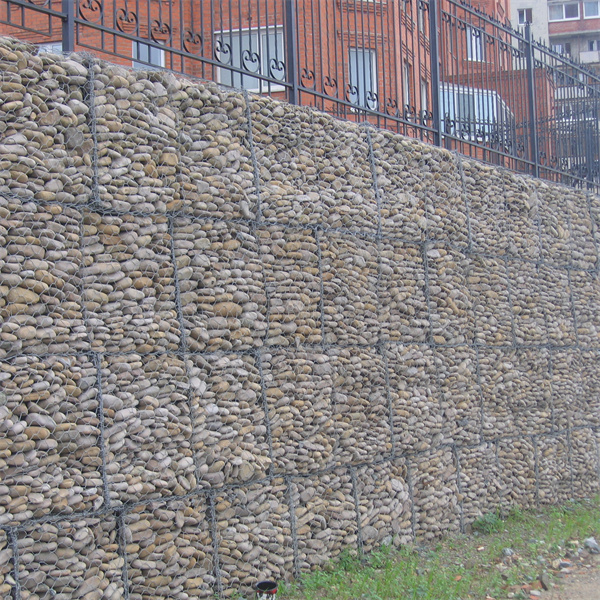Nov . 19, 2024 19:53 Back to list
gabion wall cost calculator
Understanding Gabion Wall Cost A Comprehensive Guide
When it comes to landscaping and construction, gabion walls have gained popularity due to their aesthetic appeal and functionality. Made from wire mesh cages filled with stone, these walls offer stability, drainage, and an eco-friendly solution for erosion control, noise reduction, and aesthetic enhancement. However, potential builders often wonder, “What is the cost of constructing a gabion wall?” To answer this, we’ll delve into the factors affecting the cost and how to use a gabion wall cost calculator effectively.
Factors Influencing Gabion Wall Costs
1. Materials The primary cost drivers are the materials used. The gabion baskets themselves are typically made of galvanized steel or PVC-coated wire, while the fill material can vary from small rocks to significant boulders. The choice of fill material impacts both aesthetic quality and functionality. A decorative option will likely be more expensive than standard stone.
2. Size and Design The dimensions of the wall will significantly influence the cost. Larger walls require more materials and labor. Additionally, custom designs or complex wall shapes may also increase costs. Simple straight walls are generally more economical than curved or terraced designs.
3. Location and Accessibility The site’s location plays a pivotal role in construction costs. If the site is remote or challenging to access, transportation costs for materials can increase. Furthermore, if the work area requires substantial excavations or land preparation, this can add to the total expenses.
4. Labor Costs Labor prices can vary based on the region and the complexity of the project. If the construction requires skilled labor for intricate designs or high walls, the labor costs will naturally be higher. Additionally, unexpected complications during construction may drive labor costs up.
5. Permits and Regulations Depending on local regulations, permits may be required for constructing gabion walls, especially if they exceed a certain height or if they are built near water bodies. The cost of these permits should be factored into the overall project budget.
6. Maintenance and Longevity While gabion walls are durable and can last for decades, they do require some maintenance. Periodic checks for rust, drainage functionality, and settling of the fill material can incur additional costs over time. Understanding the long-term costs is as important as initial installation costs.
gabion wall cost calculator

Using a Gabion Wall Cost Calculator
To effectively estimate the expenses associated with building a gabion wall, utilizing a cost calculator is a practical approach
. Here’s how to use one1. Input Basic Information Begin by entering the dimensions of the wall (length, height, and width) into the calculator. It typically requires measurements in linear feet or meters.
2. Select Materials Choose your materials from the options provided. This usually includes different wire types for the baskets and various fill materials.
3. Calculate Labor Costs Enter local labor rates, which can often be found through local construction companies or online resources.
4. Consider Additional Costs The calculator may offer options for including costs for permits, site preparation, and maintenance factors.
5. Review the Estimate Once all necessary information is entered, the calculator will provide an estimated cost. This estimate can serve as a helpful baseline as you begin discussions with contractors or suppliers.
Conclusion
Building a gabion wall can be an attractive and practical solution for various landscaping and construction needs. However, understanding the costs involved is crucial for planning and budgeting. By considering the factors outlined and utilizing a gabion wall cost calculator, you can gain a clearer picture of the potential expenses and ensure a successful project that meets your needs and enhances the environment. As with any construction project, thorough planning and informed decision-making are key to achieving desired outcomes without unexpected financial surprises.
-
Visualizing Gabion 3D Integration in Urban Landscapes with Rendering
NewsJul.23,2025
-
The Design and Sustainability of Gabion Wire Mesh Panels
NewsJul.23,2025
-
The Acoustic Performance of Gabion Sound Barriers in Urban Environments
NewsJul.23,2025
-
Mastering the Installation of Galvanized Gabion Structures
NewsJul.23,2025
-
Gabion Boxes: Pioneering Sustainable Infrastructure Across the Globe
NewsJul.23,2025
-
Custom PVC Coated Gabion Boxes for Aesthetic Excellence
NewsJul.23,2025
-
Installation Tips for Gabion Wire Baskets in Erosion Control Projects
NewsJul.21,2025






